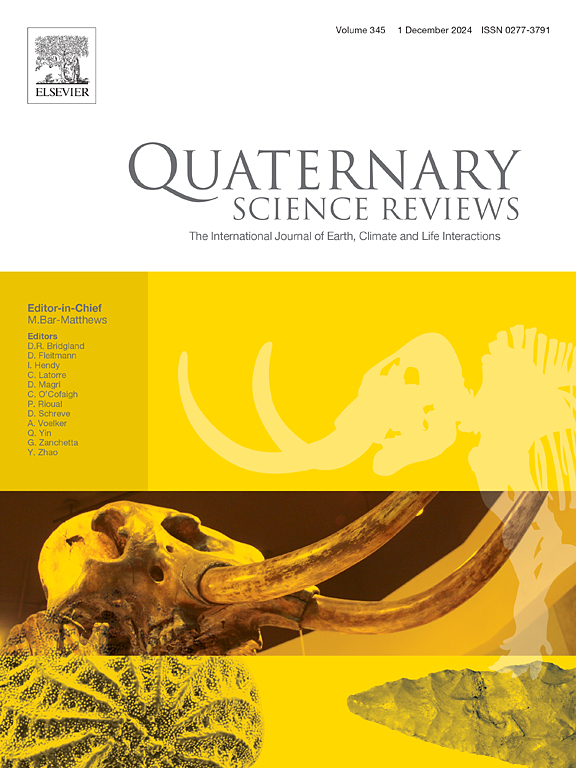Elevated equilibrium line altitude over High Mountain Asia during the Last Interglacial
IF 3.2
1区 地球科学
Q1 GEOGRAPHY, PHYSICAL
引用次数: 0
Abstract
High Mountain Asia (HMA) was experiencing rapid climate change and significant glacier shrinkage in recent three decades, which has profound environmental and socioeconomic impacts on Asia. To better decipher the climate-glacier interaction, we examine climate change and the associated response of the Equilibrium Line Altitude (ELA) over HMA during the Last Interglacial (LIG), often viewed as a potential analogue for future warming world. Based on the bias-corrected model outputs from the Paleoclimate Modeling Intercomparison Project Phase 4, we illustrate an overall warmer/wetter state over HMA in summer but colder/drier conditions in winter during the LIG relative to the preindustrial. In response to the modeled climate change, the ELA rises by ∼466 ± 124 m on average across HMA during the LIG relative to the preindustrial, with more intense increase in the northern parts. Moreover, our sensitivity analysis shows that air temperature change dominates the variation of ELA during the LIG, and climate change during the summer season plays the most important role compared with the other seasons. Additionally, we demonstrate that the modeled ELA change could be largely biased if the seasonality effect is not considered. Despite the lack of glacier deposits/sediments for the LIG, the elevated ELA is in accordance with the reconstructed summer warming and expanded ancient lakes. Our results may improve the understanding of glacier behavior over HMA during the LIG and shed light on glacier response to future warming.
末次间冰期亚洲高山平衡线海拔升高
近30年来,亚洲高山地区经历了快速的气候变化和显著的冰川萎缩,对亚洲的环境和社会经济产生了深刻的影响。为了更好地解释气候-冰川相互作用,我们研究了末次间冰期(LIG)的气候变化和平衡线高度(ELA)对HMA的相关响应,这通常被视为未来变暖世界的潜在模拟。基于古气候模拟比对项目第4阶段的偏倚校正模式输出,我们说明了在LIG期间,相对于工业化前,HMA总体上在夏季更暖/更湿,而在冬季更冷/更干燥。与工业化前相比,lg期间整个HMA的ELA平均上升了~ 466±124 m,其中北部地区的上升幅度更大。敏感性分析表明,气温变化主导了lg期间ELA的变化,其中夏季气候变化对ELA的影响最大。此外,我们证明,如果不考虑季节性影响,模拟的ELA变化可能有很大偏差。尽管LIG缺乏冰川沉积物,但ELA的升高与夏季增温重建和古湖泊扩张相一致。我们的研究结果可能会提高对冰川在LIG期间的HMA行为的理解,并揭示冰川对未来变暖的响应。
本文章由计算机程序翻译,如有差异,请以英文原文为准。
求助全文
约1分钟内获得全文
求助全文
来源期刊

Quaternary Science Reviews
地学-地球科学综合
CiteScore
7.50
自引率
15.00%
发文量
388
审稿时长
3 months
期刊介绍:
Quaternary Science Reviews caters for all aspects of Quaternary science, and includes, for example, geology, geomorphology, geography, archaeology, soil science, palaeobotany, palaeontology, palaeoclimatology and the full range of applicable dating methods. The dividing line between what constitutes the review paper and one which contains new original data is not easy to establish, so QSR also publishes papers with new data especially if these perform a review function. All the Quaternary sciences are changing rapidly and subject to re-evaluation as the pace of discovery quickens; thus the diverse but comprehensive role of Quaternary Science Reviews keeps readers abreast of the wider issues relating to new developments in the field.
 求助内容:
求助内容: 应助结果提醒方式:
应助结果提醒方式:


